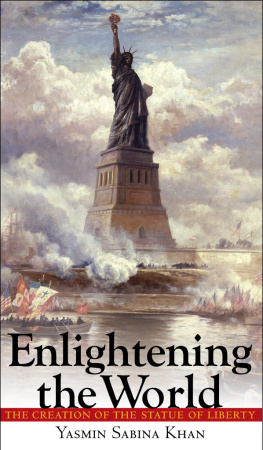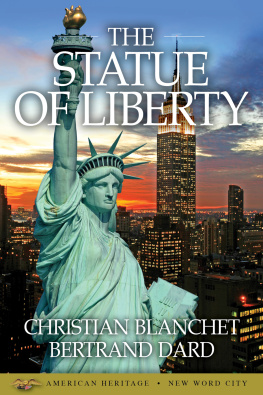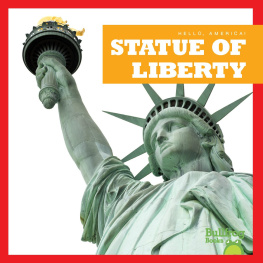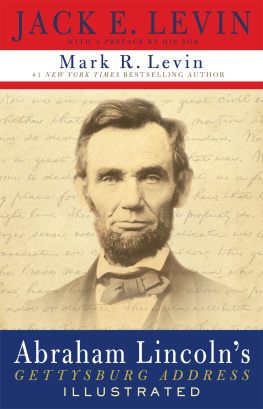Yasmin Sabina Khan - Enlightening the World: The Creation of the Statue of Liberty
Here you can read online Yasmin Sabina Khan - Enlightening the World: The Creation of the Statue of Liberty full text of the book (entire story) in english for free. Download pdf and epub, get meaning, cover and reviews about this ebook. year: 2010, publisher: Cornell University Press, genre: Politics. Description of the work, (preface) as well as reviews are available. Best literature library LitArk.com created for fans of good reading and offers a wide selection of genres:
Romance novel
Science fiction
Adventure
Detective
Science
History
Home and family
Prose
Art
Politics
Computer
Non-fiction
Religion
Business
Children
Humor
Choose a favorite category and find really read worthwhile books. Enjoy immersion in the world of imagination, feel the emotions of the characters or learn something new for yourself, make an fascinating discovery.
- Book:Enlightening the World: The Creation of the Statue of Liberty
- Author:
- Publisher:Cornell University Press
- Genre:
- Year:2010
- Rating:5 / 5
- Favourites:Add to favourites
- Your mark:
Enlightening the World: The Creation of the Statue of Liberty: summary, description and annotation
We offer to read an annotation, description, summary or preface (depends on what the author of the book "Enlightening the World: The Creation of the Statue of Liberty" wrote himself). If you haven't found the necessary information about the book — write in the comments, we will try to find it.
Conceived in the aftermath of the American Civil War and the grief that swept France over the assassination of Abraham Lincoln, the Statue of Liberty has been a potent symbol of the nations highest ideals since it was unveiled in 1886. Dramatically situated on Bedloes Island (now Liberty Island) in the harbor of New York City, the statue has served as a reminder for generations of immigrants of Americas long tradition as an asylum for the poor and the persecuted. Although it is among the most famous sculptures in the world, the story of its creation is little known.
In Enlightening the World, Yasmin Sabina Khan provides a fascinating new account of the design of the statue and the lives of the people who created it, along with the tumultuous events in France and the United States that influenced them. Khans narrative begins on the battlefields of Gettysburg, where Lincoln framed the Civil War as a conflict testing whether a nation conceived in liberty, and dedicated to the proposition that all men are created equal . . . can long endure. People around the world agreed with Lincoln that this questionand the fate of the Union itselfaffected the whole family of man.
Inspired by the Unions victory and stunned by Lincolns death, douard-Ren Lefebvre de Laboulaye, a legal scholar and noted proponent of friendship between his native France and the United States, conceived of a monument to liberty and the exemplary form of government established by the young nation. For Laboulaye and all of France, the statue would be called La Libert clairant le MondeLiberty Enlightening the World.
Following the statues twenty-year journey from concept to construction, Khan reveals in brilliant detail the intersecting lives that led to the realization of Laboulayes dream: the Marquis de Lafayette; Alexis de Tocqueville; the sculptor Auguste Bartholdi, whose commitment to liberty and self-government was heightened by his experience of the Franco-Prussian War; the architect Richard Morris Hunt, the first American to study architecture at the prestigious cole des Beaux-Arts in Paris; and the engineer Gustave Eiffel, who pushed the limits for large-scale metal construction. Also here are the contributions of such figures as Senators Charles Sumner and Carl Schurz, the artist John La Farge, the poet Emma Lazarus, and the publisher Joseph Pulitzer.
While exploring the creation of the statue, Khan points to possible sourcesseveral previously unexaminedfor the design. She links the statues crown of rays with Benjamin Franklins image of the rising sun and makes a clear connection between the broken chain under Lady Libertys foot and the abolition of slavery. Through the rich story of this remarkable national monument, Enlightening the World celebrates both a work of human accomplishment and the vitality of liberty.
Yasmin Sabina Khan: author's other books
Who wrote Enlightening the World: The Creation of the Statue of Liberty? Find out the surname, the name of the author of the book and a list of all author's works by series.








